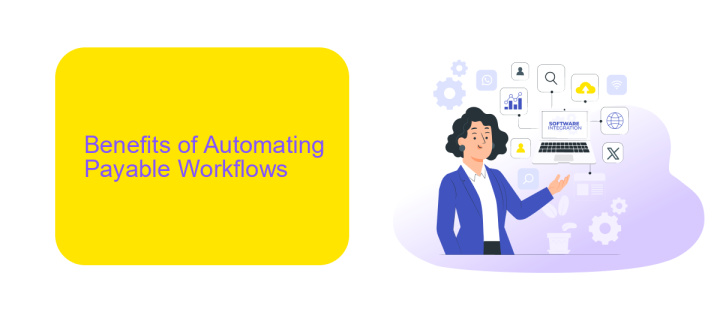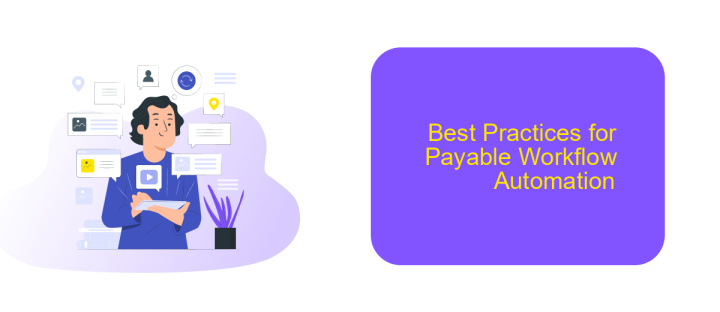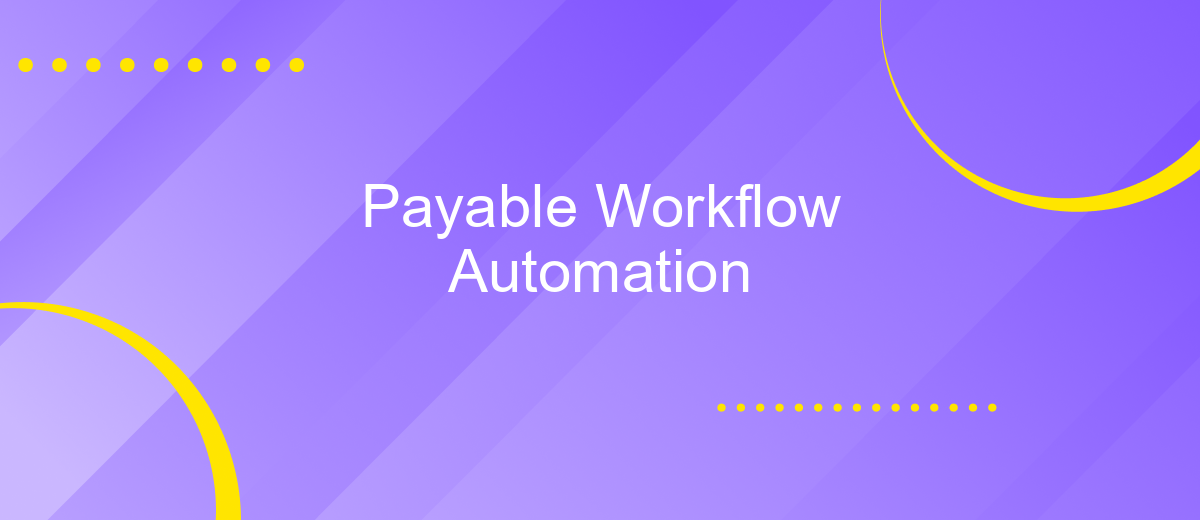Payable Workflow Automation
In today's fast-paced business environment, efficient financial management is crucial. Payable Workflow Automation streamlines the accounts payable process, reducing manual effort and minimizing errors. This technology not only accelerates invoice processing but also enhances accuracy and compliance, enabling businesses to focus on strategic growth. Discover how automating your payable workflows can transform your financial operations and drive organizational success.
Introduction to Payable Workflow Automation
Payable Workflow Automation is transforming the way businesses manage their accounts payable processes. By automating repetitive tasks, companies can significantly reduce manual errors, save time, and improve overall efficiency. This technology streamlines invoice processing, approval workflows, and payment execution, ensuring that financial operations run smoothly and accurately.
- Reduction of manual data entry errors
- Faster invoice processing and approval times
- Enhanced visibility and control over financial data
- Improved compliance with regulatory standards
- Cost savings through reduced operational overhead
Integrating payable workflow automation with existing systems can be seamless with tools like ApiX-Drive. ApiX-Drive facilitates easy integration between various software applications, allowing businesses to automate their payable workflows without the need for extensive IT resources. By leveraging such services, companies can ensure that their financial processes are not only automated but also interconnected, providing a comprehensive solution for efficient accounts payable management.
Benefits of Automating Payable Workflows

Automating payable workflows significantly enhances efficiency by reducing manual intervention and minimizing human errors. By streamlining the approval process, organizations can ensure that invoices are processed faster, leading to timely payments and improved vendor relationships. Automation tools can seamlessly integrate with existing financial systems, providing real-time visibility into the payment status and ensuring compliance with financial regulations.
Additionally, automation can lead to substantial cost savings. By eliminating the need for paper-based processes and reducing the time spent on manual data entry, companies can allocate resources to more strategic tasks. Services like ApiX-Drive facilitate easy integration of various financial systems, enabling a smooth and cohesive workflow. This not only optimizes operational efficiency but also provides valuable insights through data analytics, helping businesses make informed financial decisions.
How to Implement Payable Workflow Automation

Implementing payable workflow automation can significantly enhance the efficiency of your financial processes. To get started, follow these steps:
- Assess Current Workflow: Analyze your existing payable processes to identify inefficiencies and areas for improvement.
- Choose the Right Tools: Select automation software that fits your business needs. Tools like ApiX-Drive can help integrate various financial systems seamlessly.
- Set Up Integrations: Use integration services such as ApiX-Drive to connect your accounting software, ERP systems, and other financial tools to ensure smooth data flow.
- Customize Automation Rules: Define rules and conditions for automating tasks such as invoice approvals, payment scheduling, and notifications.
- Test and Monitor: Conduct thorough testing to ensure the automation works as intended. Continuously monitor the system to identify and resolve any issues.
By following these steps, you can streamline your payable processes, reduce manual errors, and save valuable time. Automation not only improves accuracy but also allows your team to focus on more strategic tasks.
Best Practices for Payable Workflow Automation

Implementing best practices in payable workflow automation ensures efficiency and accuracy in financial operations. Start by clearly defining the workflow processes and identifying the key stages where automation can be most beneficial. This will help in streamlining tasks and reducing manual errors.
Next, choose a reliable automation tool that fits your business needs. Consider factors such as ease of use, compatibility with existing systems, and scalability. ApiX-Drive is a valuable service that facilitates seamless integration between various platforms, making it easier to automate and manage workflows.
- Regularly update and maintain the automation software to ensure it functions optimally.
- Train staff to effectively use the automated system and understand its benefits.
- Monitor and analyze the performance of the automated workflow to identify areas for improvement.
- Ensure data security and compliance with relevant regulations to protect sensitive financial information.
By following these best practices, businesses can achieve a more efficient and error-free payable workflow. Continuous evaluation and adaptation of the automation processes will further enhance operational efficiency and financial accuracy.
Conclusion
In conclusion, implementing Payable Workflow Automation can significantly enhance the efficiency and accuracy of financial operations within an organization. By automating repetitive tasks, reducing manual errors, and streamlining processes, businesses can achieve greater productivity and cost savings. Automated workflows also provide better visibility and control over financial data, leading to more informed decision-making and improved compliance with regulatory requirements.
Moreover, integrating various financial systems and tools through services like ApiX-Drive can further optimize the payable workflow. ApiX-Drive facilitates seamless connections between different software applications, enabling smooth data transfer and synchronization. This integration capability ensures that all financial information is up-to-date and consistent across platforms, reducing the risk of discrepancies and enhancing overall operational efficiency. Embracing payable workflow automation and leveraging advanced integration solutions can ultimately drive business growth and success.
- Automate the work of an online store or landing
- Empower through integration
- Don't spend money on programmers and integrators
- Save time by automating routine tasks
FAQ
What is Payable Workflow Automation?
How does Payable Workflow Automation benefit businesses?
What are the key features to look for in a Payable Workflow Automation solution?
How can businesses integrate Payable Workflow Automation with their existing systems?
Is Payable Workflow Automation suitable for small businesses?
Do you want to achieve your goals in business, career and life faster and better? Do it with ApiX-Drive – a tool that will remove a significant part of the routine from workflows and free up additional time to achieve your goals. Test the capabilities of Apix-Drive for free – see for yourself the effectiveness of the tool.


